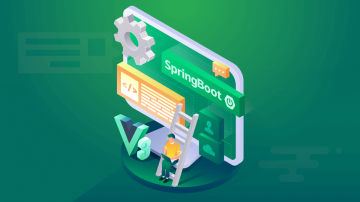Sending an email with images
public void sendInlineResourceMail(String to, String subject, String content,
String rscPath, String rscId) throws MessagingException {
MimeMessage message = mailSender.createMimeMessage();
MimeMessageHelper helper = new MimeMessageHelper(message, true);
helper.setFrom(from);
helper.setTo(to);
helper.setSubject(subject);
helper.setText(content, true);
FileSystemResource res = new FileSystemResource(new File(rscPath));
helper.addInline(rscId, res);
mailSender.send(message);
}
@Test
public void senInlineResourceMail() throws MessagingException {
String imgPath = "";
String rscId = "***";
String content = "<html><body><img src=\'cid:" + rscId
+ "\'></img></body></html>";
mailService.sendInlineResourceMail("***", "test", content, imgPath, rscId);
}
Sending a template email with thymeleaf
Step 1: Import dependency.
- Notice: Do not import thymeleaf until you really start using it.
<dependency>
<groupId>org.springframework.boot</groupId>
<artifactId>spring-boot-starter-thymeleaf</artifactId>
</dependency>
Step 2: Create an html template
<!DOCTYPE html>
<html lang="en" xmlns:th="http://www.thymeleaf.org">
<head>
<meta charset="UTF-8"/>
<title>Email</title>
</head>
<body>
Hello! Activate account!
<a href="#" th:href="@{https://www.google.ca}">Activate account</a>
</body>
</html>
Step 3: Send this email
@Test
public void templateMail() throws MessagingException {
Context context = new Context();
// context.setVariable("id", "006");
String emailTemplate = templateEngine.process("emailTemplate", context);
mailService.sendHTMLMail("send to", "test", emailTemplate);
}
Exception handler
Sending an email is usually an asynchronous request. We need to handle the exceptions in the try catch.
So we add a logger in the service.
Step 1: Add Logger as an instance variable.
import org.slf4j.Logger;
import org.slf4j.LoggerFactory;
private final Logger logger = LoggerFactory.getLogger(this.getClass());
Step 2: try catch and print log
public void sendInlineResourceMail(String to, String subject, String content,
String rscPath, String rscId) {
logger.info("Sending email start: {},{},{},{},{}", to, subject, content, rscPath, rscId);
MimeMessage message = mailSender.createMimeMessage();
MimeMessageHelper helper = null;
try {
helper = new MimeMessageHelper(message, true);
helper.setFrom(from);
helper.setTo(to);
helper.setSubject(subject);
helper.setText(content, true);
FileSystemResource res = new FileSystemResource(new File(rscPath));
helper.addInline(rscId, res);
mailSender.send(message);
logger.info("Sending email success!");
} catch (MessagingException e) {
logger.error("Sending email failed:",e);
}
}
Step 3: test
Run the same test method, and we can see the log in the terminal.

 随时随地看视频
随时随地看视频




